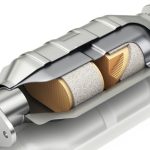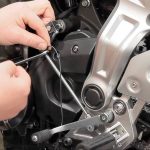
History of the Automatic Transmission
General Motors and REO both released semi-automatic vehicle transmissions in 1934. These models posed fewer challenges than the traditional manual transmission but still required the use of a clutch to change gears. The GM transmission was the first of its kind to use a hydraulically controlled planetary gearbox, allowing the gears to shift depending on the vehicle’s travel speed.
The planetary transmission was one of the most important developments on the road to the modern automatic transmission. Although GM was the first to use the version with hydraulic controls, this technology actually dates to a 1900 invention by Wilson-Pilcher. That innovation consisted of four forward gears on two trains that could be shifted with a single lever.
Operation of an Automatic Transmission
The most common type of automatic transmission uses hydraulic power to shift gears. This device combines a torque or fluid coupling converter with gearsets that provide the desired range of gears for the vehicle. The torque converter connects the engine to the transmission and uses pressurized fluid to transfer power to the gears. This apparatus replaces a manual friction clutch and lets the vehicle come to a complete stop without stalling.
As the engine transmits power to the pump of the torque converter, the pump converts this power into transmission fluid that powers the turbine of the torque converter. This apparatus increases the power of the fluid and transmits even more power back to the turbine, which creates a vortex power rotation that spins the turbine and the attached central shaft. The power created by this rotation is then transmitted from the shaft to the transmission’s first planetary gear set.
This type of transmission has what is called hydraulic control. The transmission fluid is pressurized by an oil pump, which allows the speed to change depending on the vehicle’s speed, tire revolutions per minute, and other factors. The gear pump is placed between the planetary gearset and torque converter, where it pulls and pressurizers transmission fluid from a sump. The pump input leads directly to the housing of the torque converter attached to the flexplate of the engine. When the engine is not running, the transmission does not have the oil pressure needed to operate and thus the vehicle cannot be push-started.
The planetary gear train is a mechanical system in which the gears are connected with a set of bands and clutches. When the driver changes gears, the bands hold one gear still while rotating another to transmit torque from the engine and increase or decrease gears.
The different gears are sometimes called the sun gear, the ring gear, and the planetary gear. The arrangement of the gears determines how much power will flow from one gear to another and out to the drive train of the vehicle when you shift.
Gears of an Automatic Transmission
The gears of an automatic transmission include the following:
- According to How a Car Works, when you shift your vehicle into drive, you engage all available forward gear ratios. This means that the transmission can move between its full range of gears as needed. Six-speed automatic transmissions are the most common number of gears, but older cars and entry-level compact cars may still have either four or five automatic gears.
- Third gear either locks the transmission in third gear or limits it to the first, second, and third gear ratios. This provides the power and traction needed to go either uphill or downhill or to tow a boat, RV, or trailer. When the engine reaches a designated level of revolutions per minute (RPM), most vehicles automatically drop third gear to keep the engine from harm.
- Second gear either locks the transmission in second gear or limits it to the first and second gear ratios. This gear is ideal for going uphill and downhill in slippery conditions as well as driving during ice, snow, and other types of inclement weather.
- First gear is used when you want to lock the transmission in first gear, although some vehicles will automatically switch out of this gear to protect the engine at a certain RPM. Like second and third gear, this gear is best used for towing, driving uphill or downhill, and when traveling during slippery, icy conditions.
Advantages of an Automatic Transmission
The biggest advantage of an automatic transmission is the ability to drive without the need for a clutch as is required with a manual transmission. Individuals with many disabilities are able to drive using an automatic since operation only requires two usable limbs.
The lack of a clutch also eliminates the need to pay attention to shifting manually and monitoring the tachometer to make the necessary shifts, which gives you more attention to focus on the task of driving.
Many drivers also find it easier to control an automatic transmission at low speeds than a manual transmission. The hydraulic automatic transmission creates a phenomenon called idle creep, which encourages the vehicle to move forward even when idling.

